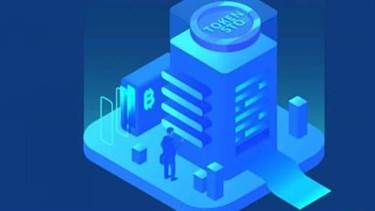Stubs can emulate lower-level modules, so testing can begin even before they are totally constructed. This assist in enhancing the testing procedure and give the event staff enter more rapidly. At this stage, it begins to fastidiously look at the connections between each module to discover any attainable problems resulting from a single unit. When the testing is complete, end-to-end testing is carried out to assess the application’s performance from begin to finish. It considers the entire person journey from the preliminary to the final output to identify points when varied models work together.
Here, the central module is Module 1, which we should attain ultimately, and the smaller isolated modules are Module 2 and Module 3, and so on. Module 6 is probably not immediately connected to Module 1, which we must be cautious about as it could injury the complete testing flow. With the assistance of this data, you’ll have the ability to make an informed choice between these two testing strategies. So, based on your testing project and sources, select the one that offers probably the most benefits. Example – For Unit Testing of ‘Sales Order Printing’ program, a ‘Driver’ program may have the code which is ready to create Sales Order records using hardcoded information and then call ‘Sales Order Printing’ program.

integrated take a look at is complete, further system exams are carried out for quantity and constraint tests. Once the module dependency graph is clear, a tester can perform random integrations, called the massive bang technique, or logically be part of the modules one by one, referred to as the incremental methodology. This information by Harish Rajora covers one of many kinds of incremental testing called prime down, the place we move forward, ranging from the principle module and ending with the smallest sub-modules. Both have their benefits, however high down performs higher and is the commonest strategy used in integration testing when eventualities are appropriate.
Variations Between Prime Down Testing Vs Bottom Up Testing
These phrases (stub & driver) come into the picture while doing Integration Testing. While engaged on integration, generally we face a situation the place a few of the functionalities are still underneath growth. So the functionalities that are under growth shall be replaced with some dummy programs. Each and each module involved in integration testing ought to be unit testing prior to integration testing. By doing unit testing prior to integration testing provides confidence in performing software integration testing.
In this way, all the modules are built-in and examined simultaneously. The major or top modules are given essentially the most importance within the high down method. The top modules are tested first and thru these major modules, different submodules are known as. Furthermore, whereas integrating submodules, we must be positive that the module we’re integrating is a baby of the principle module. This testing is primarily carried out on software written in a process or structure-oriented language. However, there could be a couple of instances where all modules are still in manufacturing and require a dummy program.

Top Down Integration testing which is also recognized as Incremental integration testing. In this Top Down method the higher stage modules are examined first after larger level modules the lower stage modules are examined. Here the upper level modules refers to major module and decrease level modules refers to submodules. This approach makes use of Stubs that are mainly used to simulate the submodule, if the invoked submodule just isn’t developed this Stub works as a momentary replacement.
Big-bang Method
It could be challenging to cover all integration potentialities in difficult systems adequately. Driver is a temporary module that’s used to name the interface procedures of the module to be tested and report the outcomes. Drivers are utilized in bottom-up testing to simulate the caller module for a module to be examined. As its name suggests, we move in the course of depth and first integrate the modules beneath each other.
The program is divided into more elements, often identified as modules or models. The actual problem comes after we mix these elements to develop the whole software system. Top–down approaches emphasize planning and an entire understanding of the system. It is inherent that no coding can begin until a sufficient degree of element has been reached within the design of at least some part of the system.
In these, low-level modules are tested first, and then high-level modules are tested. This sort of testing or approach is also referred to as inductive reasoning and is used as a synthesis synonym in many cases. Bottom-up testing is user-friendly testing and results in an increase in total software development. This testing results in excessive success rates with long-lasting outcomes.
Key Differences Between Top-down And Bottom-up Integration Testing
testing, the entire utility is developed in a skeletal type and tested. As items of the skeleton are fleshed out, they’re added to the take a look at software. These examined modules are then utilized to assist with testing of higher-level modules. While following this upward testing course, drivers are eradicated top-down testing as main modules get developed completely. Integration testing also called I & T is a software program testing method the place completely different software program modules or elements are built-in and examined as a single unit.
Moreover, top-down testing goes from major to minor components, whereas bottom-up testing goes from small to significant modules. Integration testing is a crucial part of the software growth trade. Especially since consumer necessities are extraordinarily dynamic and deadlines are limited.
Top-down testing employs a systematic approach to testing the software program modules from the top level down via the system hierarchy. The testing begins with the primary module of the software and then proceeds to test the submodules of the appliance. Bottom-up testing is a kind of integration testing that integrates modules from the bottom first and then strikes upward in the management move graph until all modules are tested. During the event of recent products, designers and engineers rely on each bottom–up and top–down approaches. The bottom–up method is getting used when off-the-shelf or present parts are chosen and built-in into the product. An example contains deciding on a specific fastener, such as a bolt, and designing the receiving components such that the fastener will match correctly.
The testing of the software program begins with smaller items and works its way up to the complete system. Continuous integration and continuous supply practices can help in this automation. CI/CD pipelines automate the code’s improvement, testing, and deployment.
Difference Between Prime Down And Bottom Up Integration Testing
The primary modules are additionally built-in first and submodules are integrated subsequently to verify if the software functionality works correctly. The bottom-Up testing method is a sort of incremental integration testing strategy carried out to judge the risks in the software program. The most significant advantage of executing this method https://www.globalcloudteam.com/ is its user-friendliness which offers high deployment coverage in software program improvement. The lower modules are then built-in and examined separately once the principle module has passed every of its unbiased checks. The flight search module is first built-in and examined with the primary module.
- This approach is much less complicated and faster however doesn’t discover all the difficult areas of an utility.
- Apart from his area of study, he likes reading books so much and write typically on Twitter.
- Consider the same situations as above, we’re transferring from bottom to top this time.
- When performing Bottom-Up testing, lower-level modules are examined first.
- No instruments and programming information is required to create and execute automated checks.
Suppose this printing program makes use of another unit which calculates Sales reductions by some advanced calculations. Then name to this unit will be replaced by a ‘Stub’, which can simply return fix discount information. A ‘Driver’ is a bit of software that drives (invokes) the Unit being examined.
However, you should have a thorough information of Integration testing and its necessities earlier than you leap to understanding its different approaches. Javatpoint supplies tutorials with examples, code snippets, and practical insights, making it appropriate for each newbies and experienced developers. In this section, we are going to talk about the difference between top-down and bottom-up integration testing; and see a short introduction of them. Below are the totally different strategies, the way they are executed and their limitations as nicely advantages. Software Engineering defines variety of strategies to execute Integration testing, viz.










